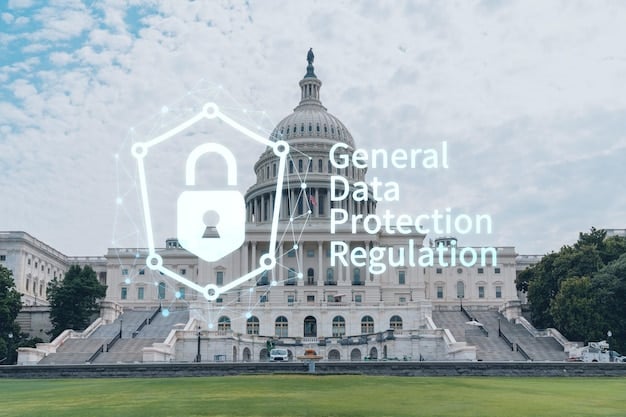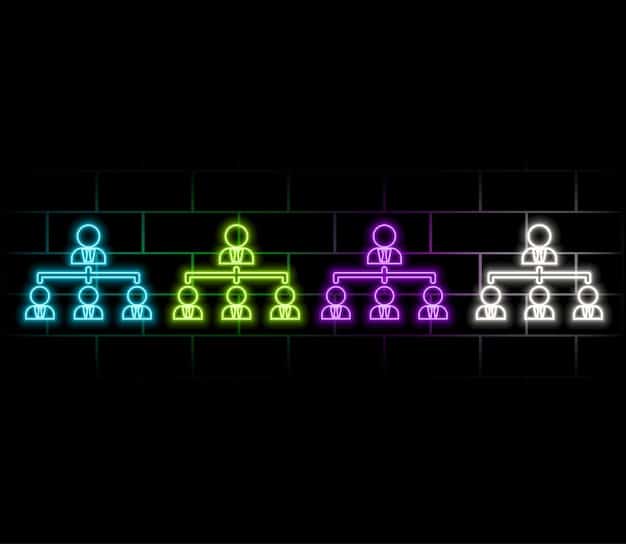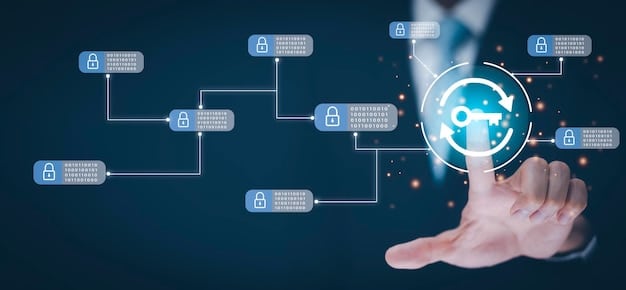New Federal Data Privacy Regulations in 2025: What You Need to Know

Anúncios
New Federal Regulations on Data Privacy in 2025 are poised to significantly impact how businesses handle consumer data, requiring enhanced transparency, stricter consent protocols, and robust security measures to protect personal information, ultimately reshaping the digital privacy landscape.
The landscape of data privacy is constantly evolving, and 2025 is set to bring significant changes with the introduction of new federal regulations on data privacy. This shift will impact businesses and consumers alike, reshaping how personal information is collected, stored, and used. These regulations are designed to provide stronger protections for individuals and greater accountability for organizations.
Anúncios
Understanding the Impetus Behind the New Regulations
The push for stronger federal data privacy regulations stems from growing concerns about the collection, use, and security of personal data in the digital age. High-profile data breaches, increased awareness of data exploitation, and the patchwork of varying state laws have all contributed to the need for a comprehensive federal standard.
Anúncios
Key Drivers for Enhanced Data Privacy
Several factors are driving the need for stronger federal regulations. One significant driver is the inconsistency of state laws. Currently, different states have different data privacy laws, creating a complex compliance landscape for businesses operating nationwide. A federal law would provide a uniform standard, simplifying compliance efforts.
- Data breaches and security vulnerabilities
- Growing public awareness of data exploitation
- Inconsistencies in state data privacy laws
- Need for uniform national standards
Another driver is the increasing number of data breaches and security vulnerabilities. These incidents have exposed the sensitive personal information of millions of Americans, leading to identity theft, financial fraud, and other harms. Stricter data privacy regulations are intended to enhance data security and minimize the risk of breaches.

Key Provisions of the New Federal Regulations
The new federal regulations on data privacy are expected to include several key provisions aimed at enhancing individual rights and organizational responsibilities. These provisions will likely focus on transparency, consent, data minimization, and enhanced security measures.
Transparency and Notice Requirements
Transparency is expected to be a cornerstone of the new regulations. Businesses will be required to provide clear and accessible information about their data collection practices, including what data they collect, how they use it, and with whom they share it. This information must be provided in a way that is easy for consumers to understand.
Consent and Data Minimization
The new regulations will likely emphasize the importance of obtaining explicit consent from individuals before collecting and using their personal data. Consent must be freely given, specific, informed, and unambiguous. In addition, the regulations may include provisions for data minimization, requiring businesses to collect only the data that is necessary for a specific purpose.
- Explicit consent requirements
- Data minimization principles
- Restrictions on data sharing
- Rights to access, correct, and delete data
Data minimization reduces risk. If you don’t collect it, you can’t lose it.
Impact on Businesses and Organizations
The new federal regulations on data privacy will have a significant impact on businesses and organizations operating in the United States. Companies of all sizes will need to re-evaluate their data collection and processing practices to ensure compliance.

Compliance Challenges and Opportunities
Compliance with the new regulations may present several challenges for businesses. Companies will need to invest in new technologies and processes to manage data privacy effectively. They may also need to hire or train personnel to oversee data privacy compliance.
Preparing for the Regulatory Shift
To prepare for the new regulations, companies should conduct a comprehensive assessment of their current data privacy practices. This assessment should identify any gaps in compliance and outline the steps needed to address them. Companies should also develop a data privacy policy that is consistent with the new regulations.
- Data privacy compliance assessments
- Development of data privacy policies
- Employee training on data privacy
- Investment in data privacy technologies
Failing to comply may subject your company to substantial fines.
Implications for Consumer Rights and Protections
The new federal regulations on data privacy are designed to enhance consumer rights and protections, giving individuals more control over their personal information. These regulations will provide consumers with greater transparency, consent rights, and the ability to access, correct, and delete their data.
Empowering Individuals Through Data Control
One of the key goals of the new regulations is to empower individuals by giving them more control over their personal data. Consumers will have the right to know what data is being collected about them, how it is being used, and with whom it is being shared. They will also have the right to access, correct, and delete their data.
Enforcement and Remedies for Violations
The new federal regulations on data privacy will include enforcement mechanisms to ensure that businesses comply with the law. These mechanisms may include civil penalties, injunctive relief, and private rights of action. Consumers who have been harmed by violations of the data privacy regulations will have legal recourse to seek remedies.
Comparing the New Regulations to Existing State Laws
One of the key benefits of the new federal regulations on data privacy is the creation of a uniform national standard. This will simplify compliance for businesses operating across state lines and provide consumers with consistent protections regardless of where they live.
Harmonizing Data Privacy Standards
Currently, data privacy laws vary significantly from state to state. Some states have comprehensive data privacy laws, while others have more limited protections. The new federal regulations will harmonize these standards, creating a level playing field for businesses and consumers.
Addressing Gaps in State Law Coverage
The federal regulations will also address gaps in state law coverage. Some states may not have laws that protect certain types of personal data or that provide consumers with specific rights. The federal regulations will fill these gaps, ensuring that all Americans have access to strong data privacy protections.
The Role of Technology in Data Privacy Compliance
Technology will play a critical role in helping businesses comply with the new federal regulations on data privacy. Companies will need to invest in data privacy technologies to manage data effectively, protect it from breaches, and ensure compliance with the law.
Data Privacy Technologies and Solutions
Several types of data privacy technologies and solutions are available to help businesses comply with the new regulations. These include data discovery tools, data mapping software, consent management platforms, and data loss prevention systems.
Benefits of Automation and AI in Data Privacy
Automation and AI can help businesses streamline data privacy compliance and reduce the risk of errors. For example, AI can be used to automatically identify and classify personal data, automate consent management processes, and detect and prevent data breaches.
- Data discovery and classification tools
- Consent management platforms
- Data loss prevention systems
- Privacy-enhancing technologies
Future Trends in Data Privacy and Regulation
The field of data privacy is constantly evolving, and several future trends are likely to shape the regulatory landscape in the coming years. These trends include increased focus on AI ethics, the rise of privacy-enhancing technologies, and the growing importance of international data transfers.
Emerging Technologies and Data Privacy
Emerging technologies such as AI, blockchain, and the Internet of Things (IoT) are raising new data privacy concerns. These technologies can collect vast amounts of personal data, and their use may not always be transparent to consumers. Regulators will need to address these concerns to ensure that data privacy is protected in the age of emerging technologies.
The Global Data Privacy Landscape
Data privacy is a global issue, and businesses operating internationally must comply with data privacy laws in multiple jurisdictions. The new federal regulations will need to be consistent with international data privacy standards, such as the General Data Protection Regulation (GDPR) in Europe.
| Key Aspect | Brief Description |
|---|---|
| 🔑 Uniform Standards | Federal rules will standardize data privacy for all U.S. states. |
| 🛡️ Consumer Rights | Individuals gain more control over their personal data. |
| 💼 Business Impact | Companies must adapt data practices for compliance. |
| 🌐 Global Alignment | Regulations will be aligned with international data privacy norms. |
FAQ
▼
The main goals include enhancing individual rights, establishing uniform national standards, and ensuring greater accountability for organizations regarding data handling practices.
▼
Businesses will need to reassess their data collection, storage, and processing methods to align with the new rules. Adaptations may require investments into new technologies and training.
▼
Consumers will gain improved transparency, consent rights, and the capability to access, rectify, or erase their personal data held by entities.
▼
Enforcement may involve civil penalties, legal injunctions, and enabling individuals to take legal action against companies that are in violation of data privacy safeguards.
▼
The regulations aim to harmonize varying state standards into a singular national framework. This gives consistent protections across all states, addressing gaps in state-specific legislations.
Conclusion
The introduction of new federal regulations on data privacy in 2025 marks a significant step toward strengthening consumer rights and establishing clearer guidelines for businesses. By understanding these changes and preparing accordingly, both individuals and organizations can navigate the evolving data privacy landscape with confidence.